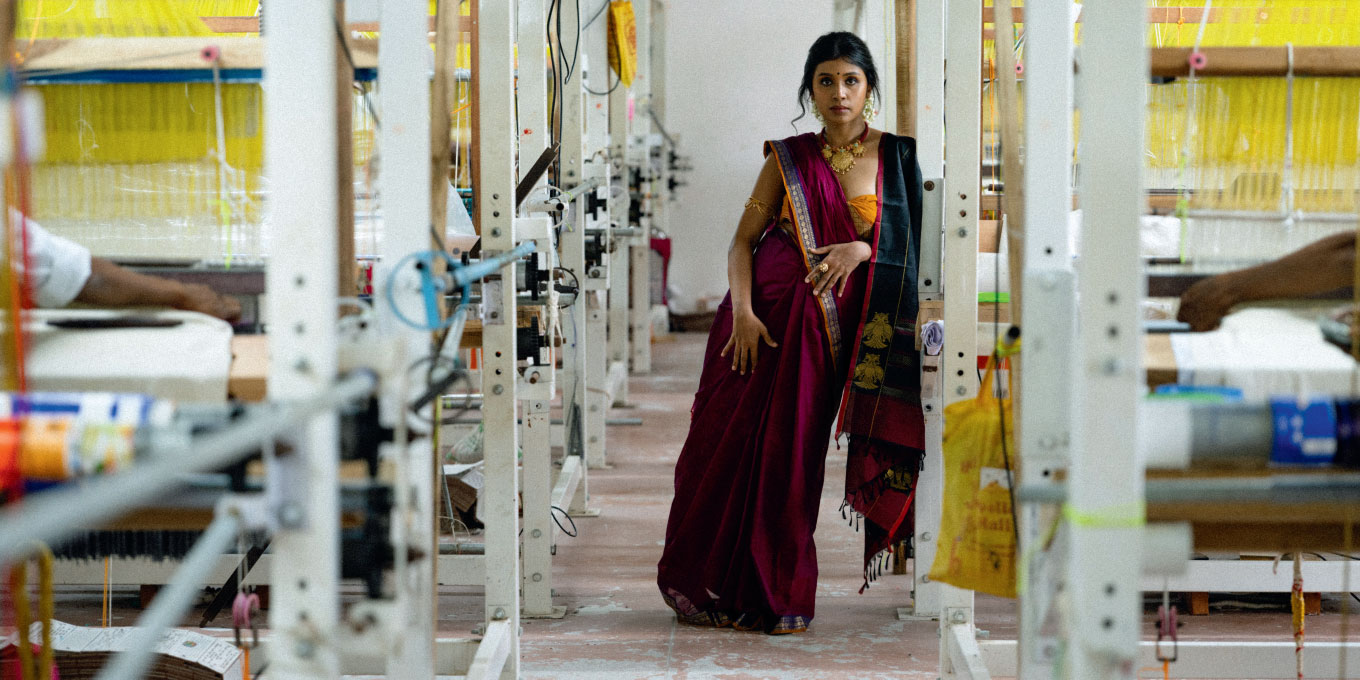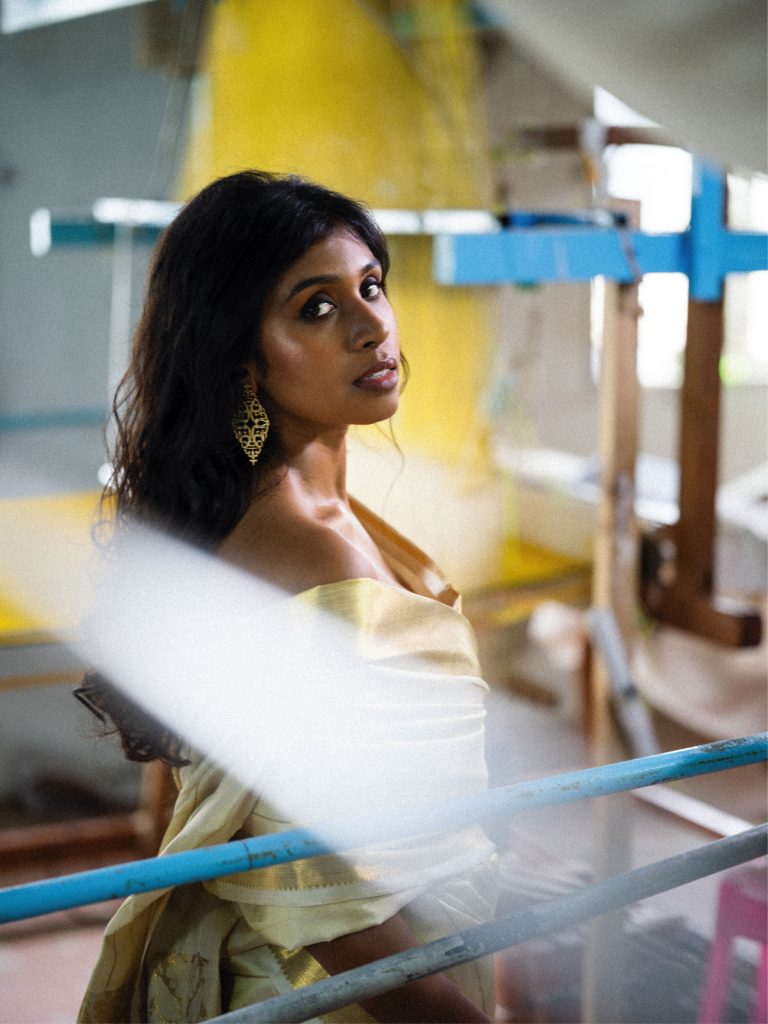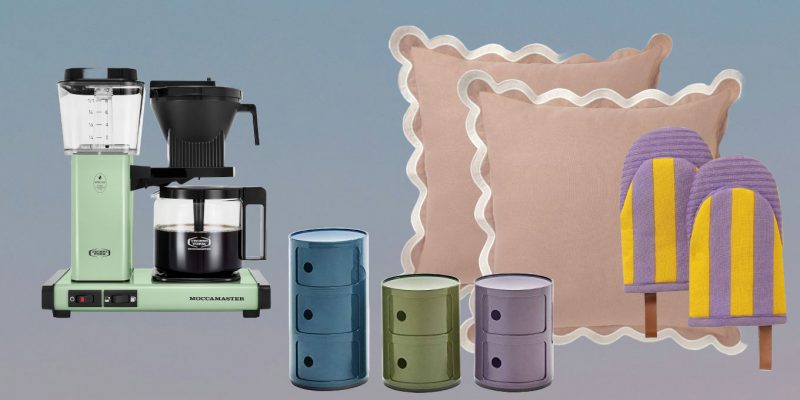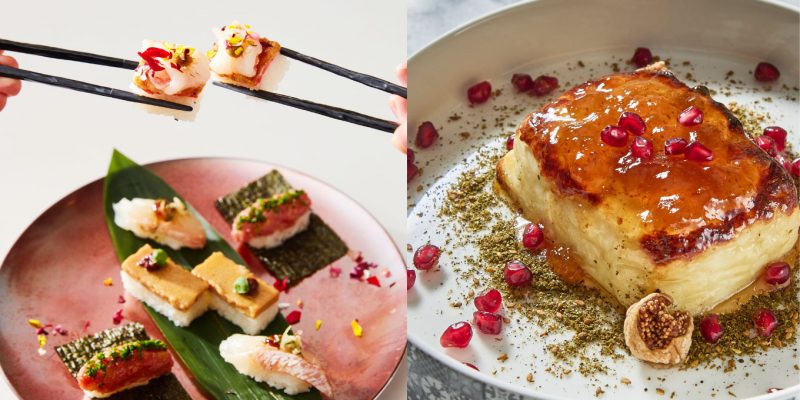Music
Dancer Usha Jey Pushes Boundaries by Being Herself
"I feel like if you make people appreciate your culture, then you can show them more things. I want people to see that our culture is beautiful.”
by : Aman Dosanj- Apr 10th, 2024

PHOTOGRAPHY, GAJAN BALAN; STYLIST, SAI SRUTHI; HAIR & MAKEUP, PRAKRUTHI ANANTH & JOTHI
“What the fuck, though? Where the love go? Five, four, three, two, I let one go,” spat American rapper Lil Wayne as Usha Jey effortlessly switched from hip-hop swagger to classical Bharatanatyam dance in a viral Instagram video. In what felt like an instant, the French-Tamilian dancer and choreographer introduced the world to who she is through a concept she calls “Hybrid Bharatham.” “In my creative process, I try to balance; I’m not trying to fuse,” says Paris-born Jey, who conceptualized the style four years ago. “I’m trying to keep the essence of both. I’m not trying to change the Bharatanatyam step to a hip-hop step.” When I ask her why she thinks the “Uproar” video racked up 5.5 million views, she replies, “In art, there is always one part of magic that you can’t explain.”
Growing up in Paris, the now 27-year-old was introduced to French rap by her older brother. But dancing wasn’t exactly part of her life plan—at least, it wasn’t when she was 16 and joined a hip-hop class as a favour to her best friend. “I wasn’t interested in dancing at all,” she recalls. “It changed my life because I got so inspired. It gave me a lot of confidence. I know I wasn’t like this before I discovered hip hop.” Finding a place to study the theatrical rhythms of Bharatanatyam, on the other hand, was not so straightforward. “The funny thing was that when I would go to class, the people with me were six or seven years old—there was literally a size gap,” she says with a laugh.
It wasn’t until 2019 that she started thinking about putting the two dance styles together. “When I was younger, I was like, ‘I love hip hop, but I’m not showing you exactly who I am.’ And when I was doing kuthu, which is a Tamil folk dance, I was like, ‘Something is missing.’ But when I’m doing Hybrid Bharatham, I feel like ‘This is me.’ I’m balancing those cultures, so it’s the perfect reflection of my life,” explains Jey. “I like Hybrid Bharatham because the process of creating it is fun. The balance and everything is a game for me, and I think people enjoy what I create because I’m having fun.”
Jey’s parents—who fled the Tamil genocide in Sri Lanka in the 1990s—stayed connected to their roots through Tamilian music and movies. “The thing my parents wanted to give me was the culture, because in Sri Lanka, we didn’t want our Tamil culture to be erased,” she explains. “The small thing I can do is represent my culture in a way that is right for me.”
What I admire most about Jey is the strength of her convictions. “It was so natural for me to go to the sari first,” she says. “I don’t see [myself performing] Hybrid Bharatham in Western clothes; it wouldn’t make sense.” Whether through honouring her culture with her wardrobe choice or choreographing a statement piece about the Tamil genocide in Sri Lanka to the anthem “One Hundred Thousand Flowers” by Toronto’s own Shan Vincent de Paul, Jey wants to show the next generation of Tamils that they can be artists too.
 PHOTOGRAPHY, GAJAN BALAN; STYLIST, SAI SRUTHI; HAIR & MAKEUP, PRAKRUTHI ANANTH & JOTHI
PHOTOGRAPHY, GAJAN BALAN; STYLIST, SAI SRUTHI; HAIR & MAKEUP, PRAKRUTHI ANANTH & JOTHIToday, with high-profile performances like the 2022 Commonwealth Games in Birmingham, England, and Vogue magazine’s 130th anniversary Vogue World event in NYC under her belt, the proud Tamilian has travelled as far as her viral video. She also dropped another dreamy instalment of Hybrid Bharatham to the sounds of Jay-Z and Alicia Keys’ “Empire State of Mind.” Featuring Jey and two other dancers decked out in white saris in a white room overlooking the cityscape, the video is split into three “paintings,” each telling a different story.
When I ask Jey if she felt nervous considering how far the last video went, she says she tries not to place pressure like that on herself. “At that time, I had 15,000 followers—and it went to 100,000!” says Jey. “It’s unmatchable. I would say [going viral] is like a shooting star—“Empire State of Mind” is a shooting star. I love the choreography, and I can see that my Bharatanatyam is improving, [as is] the way I structure things.”
“It was so natural for me to go to the Sari first. I don’t see [myself performing] hybrid Bharatham in Western clothes; it wouldn’t make sense.”
WORDS MATTER
“First of all, I want people to call it ‘Tamil culture’; [I want] to educate people on the right words. I don’t say I’m Sri Lankan—we recognize more of ourselves through our language. Those things are important to me. Beyond that, it’s about showing how [rich] the culture is. We have so many instruments. There’s a concept I’m developing called ‘Ode to Tamil Instruments,’ and I’m bringing in different Tamil instruments and different dancers to perform. I feel like if you make people appreciate your culture, then you can show them more things. I want people to see that our culture is beautiful.”
INSPIRING THE NEXT GENERATION
“When I see kids doing [the choreography], I’m like: ‘You took the time to do it! I’m so grateful.’ I encourage them to dance, but I always say, ‘Work on your foundation.’ If the roots are strong, you can grow a lot of things. If not, it will be unstable, right?”
PUSHING BACK
“It’s not about the money right now. We are in an era when we represent South Asians in the mainstream industry, so what we do is important. It’s not just about me. It’s bigger than that, and I think we will understand this many years later. I try to choose [jobs] wisely. Obviously, I can make mistakes; I am human, right? But generally, when I see things that are not working, I’m okay to quit. Certain people want to put me in a [box], so I’m like, ‘If you don’t understand the culture, I don’t want this job.’”
UP NEXT
“Right now, I’m in Chennai, India, working on myself and my foundation. I want to make sure my Bharatanatyam—and my hip hop—keep evolving. I want to do more things in cinema—I want to bring my vision to the screen and into fashion with movement direction. I love how we can create movement in fashion, and I’m really focusing on that. And, of course, [there are] my own creations. No matter how many jobs you do, it’s important to keep creating for yourself.”
Read more:
Alok Vaid-Menon Is Manifesting a World Beyond the Gender Binary
12 South Asian Canadian Creators and Artists to Watch Right Now
Karen Kain Wants a Better Future for Canadian Ballerinas
Newsletter
Join our mailing list for the latest and biggest in fashion trends, beauty, culture and celebrity.
Read Next

Decor
10 Amazon Decor Finds That Belong in a Designer’s Home
Yes, Amazon.
by : Maca Atencio- Apr 29th, 2024

Fashion
Pregnant Bellies Are Moving Into the Spotlight
Viva la MILF!
by : Jillian Vieira- Apr 29th, 2024

Beauty
ELLE Tried It: Five Serums to Up Your Skincare Game
Members of the ELLE team tested Avène Dermatological Laboratories’ five new concentrated serums. Here's what they thought.
by : ELLE Canada- Apr 25th, 2024




